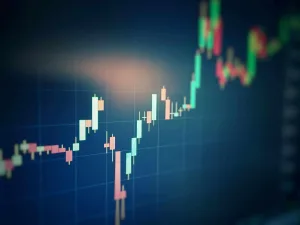What are the criteria for metals to be listed on the LME?
3 min read
What are the criteria for metals to be listed on the LME?
The London Metal Exchange (LME) stands as a beacon of the global metals market, providing a platform for the trading of a wide array of metals. However, not all metals make it to the prestigious list of tradable commodities on the LME. Behind the scenes, there are stringent criteria and rigorous evaluation processes governing the listing of metals on the exchange. In this comprehensive guide, we delve into the intricate criteria for metals to be listed on the LME, shedding light on the factors, requirements, and implications involved.
1. Market Demand and Global Significance
One of the primary criteria for a metal to be listed on the LME is its market demand and global significance. Metals with robust demand from industries such as automotive, construction, aerospace, and electronics are often considered for listing on the exchange. Additionally, metals that serve as critical components in global supply chains and have widespread industrial applications are favored for inclusion on the LME, reflecting their importance in the global economy.
2. Liquidity and Trading Activity
Liquidity is another crucial factor in determining whether a metal qualifies for listing on the LME. Metals with sufficient liquidity, characterized by active trading volumes, tight bid-ask spreads, and continuous price discovery, are more likely to be considered for listing. Liquidity ensures that market participants can buy and sell the metal efficiently, facilitating price discovery and risk management activities. Metals with low liquidity may face challenges in meeting the exchange’s listing requirements and attracting market participants.
3. Standardization and Quality Assurance
Standardization and quality assurance are essential criteria for metals seeking listing on the LME. The exchange requires metals to meet specific quality standards and specifications, ensuring consistency and reliability in trading and delivery processes. Metals must undergo rigorous testing and certification processes to demonstrate their conformity to LME standards, including purity, composition, and physical properties. Standardized metals enhance market transparency, reduce counterparty risk, and promote confidence among market participants.
4. Storage and Delivery Infrastructure
Adequate storage and delivery infrastructure are critical considerations for metals seeking listing on the LME. The exchange requires metals to have sufficient storage capacity and logistics capabilities to support trading and delivery activities. Metals listed on the LME must be deliverable in approved warehouses located in strategic locations around the world, ensuring accessibility and efficiency in the physical delivery process. Robust storage and delivery infrastructure enhance market liquidity, facilitate price convergence, and support the smooth functioning of the exchange.
5. Regulatory Compliance and Governance
Compliance with regulatory requirements and adherence to governance standards are fundamental criteria for metals seeking listing on the LME. Metals must comply with relevant regulations, including environmental regulations, safety standards, and industry best practices. Additionally, metals must adhere to the exchange’s governance framework, including rules and procedures governing trading, clearing, and settlement activities. Compliance with regulatory and governance requirements ensures market integrity, protects investor interests, and maintains confidence in the exchange’s operations.
Conclusion: Gateway to the Global Metals Market
In conclusion, the London Metal Exchange (LME) serves as the gateway to the global metals market, offering a platform for the trading of a diverse range of metals. The criteria for metals to be listed on the LME reflect the exchange’s commitment to market integrity, liquidity, and quality assurance. By meeting stringent requirements for market demand, liquidity, standardization, infrastructure, and compliance, metals can gain access to the prestigious list of tradable commodities on the LME, unlocking opportunities for market participants and contributing to the vibrancy and resilience of the global metals market.
By understanding the criteria for metals listing on the LME, market participants can gain insights into the exchange’s standards and requirements, enabling them to make informed decisions and navigate the complexities of the metals market with confidence. Whether it’s evaluating investment opportunities, managing risk, or hedging against price fluctuations, the LME’s listing criteria serve as a benchmark for excellence and reliability in the global metals market, ensuring a level playing field for market participants and fostering trust and transparency in metal trading activities.






